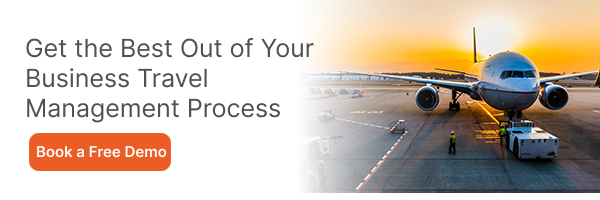
Business travel constitutes a significant cost for companies. Without proper management and oversight, these costs can quickly spiral out of control. Many organizations still rely on manual, inefficient processes to arrange, track, and reconcile business travel. Employees book flights, hotels, rental cars, and other travel necessities through consumer apps and websites. Submitting expenses and getting reimbursed becomes a tedious chore.
This lack of centralization results in limited visibility into total travel spend. Identifying areas for optimization, enforcing travel policies, and preventing fraud or abuse of company funds becomes difficult. Studies show that average unmanaged business travel costs companies 10-15% more per trip for an organization with 500 employees, which can add up to over a million dollars in wasted spending annually.
High costs and inefficiencies make it imperative for finance teams to optimize travel management. Automating processes through the SaaS ecosystem in travel offers enhanced control, insights, and significant cost savings.
The Benefits of a SaaS-Based Travel Platform
Transitioning to a SaaS ecosystem in corporate travel management platform provides numerous benefits for optimizing and streamlining processes.
The key advantages include:
- Centralized Data and Reporting: A SaaS based travel platform centralizes all booking data, expenditures, and traveler information into a single location. This eliminates data silos and provides real-time reporting and analytics. Companies gain visibility into travel spending, policy compliance, and budget metrics.
- Automated Approvals and Policy Compliance: SaaS solutions enable configuring approval workflows and applying travel policies automatically. Pre-trip approvals, post-trip expense workflows, and policy adherence are systematized. This reduces administrative burdens and ensures compliance.
- Real-Time Budget Tracking: With a SaaS based travel platform, budgets can be allocated to cost centers, departments, and projects. Transactions are tracked in real-time, providing up-to-date visibility into budget utilization. Automated alerts notify stakeholders when thresholds are nearing or exceeded.
Key Features of Leading Travel Solutions
Travel management platforms have evolved to provide robust functionality to optimize processes. Here are some of the key features of leading SaaS-based solutions:
a) Travel Planning and Booking
- Intuitive online booking platforms for flights, hotels, rental cars, and other travel needs
- Travel policy compliance built into the booking workflow
- Easy comparison of flight/hotel options based on policy guidelines
- Traveler profiles sync with frequent traveler/loyalty programs
- Automatic alerts for policy exceptions requiring approvals
- Mobile app for on-the-go booking and approvals
b) Expense Reporting
- Direct integration of expenses into reports, including out-of-policy bookings
- Receipt capture and management with mobile apps
- Mileage tracking for rental cars and personal vehicles
- Automated expense report creation and submission
- Configurable approval workflows with compliance alerts
- Direct integration with accounting systems
HR and Finance System Integrations
- Automatic population of traveler profiles from HR systems
- Connection to payroll for automated reimbursements
- Real-time syncing of spend data to accounting systems
- Customizable analytics dashboard for visibility into budgets
- Role-based access and permissions aligned to HR roles
- APIs for connecting other business systems
By leveraging these features, leading solutions enable the SaaS ecosystem in travel to gain control over travel spend, improve compliance, and streamline cumbersome manual processes. Employees also benefit from an intuitive, automated travel management experience.
Evaluating Implementation and Change Management
Adopting a new SaaS based travel platform impacts the entire organization. HR and finance leaders need an implementation plan that drives user adoption and smooth change management.
A few key considerations:
a) User Adoption Strategies
- Set clear timelines and milestones for rollout. Avoid an overly rushed timeline that leaves users frustrated.
- Involve key user groups early for input into the implementation plan. Address their questions and concerns.
- Start with smaller pilot tests before organization-wide implementation. Use feedback to refine the rollout strategy.
- Offer incentives and highlight benefits to users to drive excitement about the new platform.
- Provide hands-on training and support to build user capability and confidence.
b) Training and Support
- Develop customized training programs and manuals catered to different user groups. Recognize their varying skill levels and needs.
- Offer virtual and in-person training sessions and workshops prior to and during rollout. Make them interactive and practical.
- Provide 24/7 call and chat support when issues arise, especially in the early stages. Respond quickly to lower user frustration.
- Identify change champions who enthusiastically adopt the platform and can assist peers. Leverage them to provide organic support.
- Continuously solicit user feedback to identify ongoing challenges. Refine training programs and support resources accordingly.
The Value of an Ecosystem Approach
An important aspect of modern SaaS-based travel platforms is an open ecosystem allowing seamless integrations with complementary apps and services. Rather than an isolated software solution, leading providers offer an API-driven architecture that enables custom integrations.
This creates significant advantages for the SaaS ecosystem in travel :
- Integrations streamline workflows-By integrating travel data and workflows across HR, Finance, CRM platforms, and more; an ecosystem approach eliminates siloes and manual processes. Everything is connected for enhanced reporting, insights, and operational efficiency.
- Flexibility to connect new apps – An open API allows integration with innovative apps and services as they emerge. Companies aren’t limited to the native features of a closed software platform. The ecosystem is adaptable to changing needs.
- Leverage best-of-breed apps– Companies can choose the best complementary tools for their needs across expense reporting, video conferencing, ride-sharing, and more. An ecosystem approach avoids lock-in and creates options.
- Future-proofing – With an API-driven platform, companies within the SaaS ecosystem in travel can integrate new capabilities down the road to support emerging initiatives around data analytics, AI automation, and more. The ecosystem is ready for the future.
When vetting SaaS travel platforms, the ability to connect and synergize data across apps should be a priority. An ecosystem approach creates a flexible, future-proof foundation for ongoing optimization.
Why is Itilite an Optimal Corporate Travel Solution?
Itilite provides an intuitive, end-to-end SaaS based travel platform for managing business travel and expenses. With itilite, companies can optimize travel spending, enforce policy compliance, and provide delightful experiences for business travelers.
Our SaaS model also enables quick implementation and easy upgrades. As per itilite, leading companies have seen 10-25% savings in travel costs within months of adoption. With powerful analytics and superior user experiences, itilite delivers compelling value as an end-to-end business travel platform.
Book a 30-minute call with us to delve into the details!













